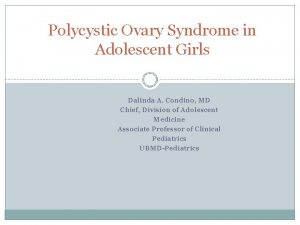Development and Implementation of Hospitalwide Ultrasound guided Peripheral

- Slides: 1

Development and Implementation of Hospital-wide Ultrasound guided Peripheral IVElizabeth Placement Nursing Dunnam Cook, RN, for RN-BC, Bedside BSN Vanderbilt University Medical Center Background Abstract Patients with difficult venous access present bedside nurses with greater challenges placing these patients at risk. Failures to obtain venous access places these patients at risk for numerous needle sticks, increased risks of infection, delays in treatment, unnecessary central line placement, and can even lead to poor patient satisfaction survey results with significant financial costs for hospitals. Research supports that ultrasound-guided peripheral intravenous catheters (USGPIV) successfully and substantially decrease these risks. Furthermore, evidence suggests it also enhances both patient and nurse satisfaction while also offering considerable savings for the hospital. Conclusions Methods • An extensive systematic review of evidence based literature was completed. Specific focus was targeted toward patient risks and benefits, structures and outcomes of existing bedside RN training programs, quality improvement, and effects on both patient and nurse satisfaction. • Collected months of data from 8 North patient situations in which patients experienced delays in care related to lack of IV access • Along with 8 North nurse educator and a Riven nurse practitioner skilled in USGPIV placement, a policy and training program was drafted to begin a study pilot on 8 North focusing on training nightshift RSLs. • Upon completion of initial pilot project, results and a standard USGPIV policy and SOP were presented to both the Vascular Access Safety Committee and the Clinical Practice Committee for review. • Two additional training sessions for RNs from multiple units hospital wide have been completed. • When new resources became available, PICC and IV therapy RNs as well as the new Radiology nurse educator were added to the project team. • Originally as an acute inpatient medicine unit, 8 North consistently took care of patients presenting with difficult venous access related to conditions such as diabetes, sickle cell anemia, ESRD, IV drug use, severe edema, and comorbid obesity. • Complications from difficult or lack of access resulted in patients experiencing excessive sticks, increased risks of infection, substantial delays in treatment, unnecessary line placement, and poor patient satisfaction. • With the lack of PICC services and IV therapy during nightshift hours, RNs experienced a lack of resources to obtain difficult venous access overnight posing significant risks to patients during this time and also leading to increased feelings of nurse burnout and job dissatisfaction. • The research question was then presented: Can training bedside nurses on the use of ultrasound guided PIV insertion improve patient care and outcomes as well as improve nurse satisfaction? USGPIV pi tal -wi de unit s (3/19 -10/20) USGP IV request r eque stss to 8 N from hospi 200 150 *majority of trained USGPIV RNs **temporary adult acute medicine unit 100 50 0 101 14 RW Units 5 N, 5 S 5 67 34 220 6 N, 6 S 6, 7, 8 MCE 7 N, 7 S 8 N, 8 S* 17 60 9 N, 9 S 7, 8, 9, 10 CCT 18 21 11 N 5 C** • Identified a need for a standard of practice for all USGPIV insertions across a multitude of disciplines, including physicians, RNs, and EMTs. • With initiation of pilot, 8 North saw an immediate decrease in delays of care reported due to lack of IV access. • Patients reported a greater satisfaction using USGPIV insertion to establish venous access and drawing labs after experiencing multiple missed attempts and delays in care. • Upon completion of training, RNs reported a much higher level of satisfaction with current job and responsibilities. • There is a direct correlation between a genuine desire to learn this skill and the RN successfully mastering skill and completing program. • Involvement of PICC and IV therapy RNs decreases required time for validation and improves identification and resolution of problems and needs for improvement. • Data strongly suggests need for USGPIV training for bedside nurses across all inpatient units. Ongoing Research Questions and Plans for Continued Expansion • Continued data collection to determine compliance from all hospital staff with standard policy • Controlled study to further evaluate decreases in CLABSI events, amount of central line days, and missed medications in specific patient populations. • Fourth expansion of project will include another session to train 8 -12 more bedside RNS taking place in late January or early February. Email Elizabeth Cook with any questions or Comments. elizabeth. w. dunnam@vumc. org

